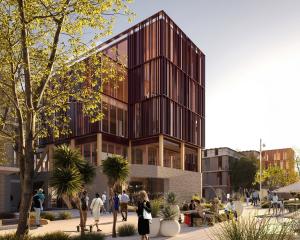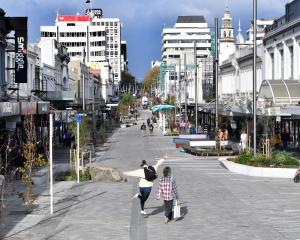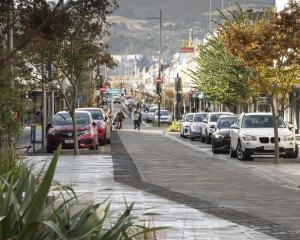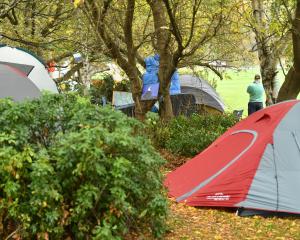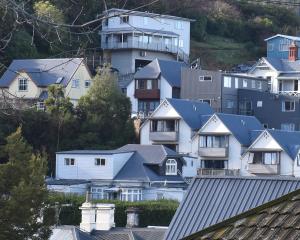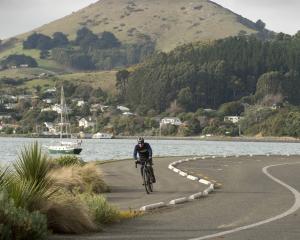
Project savings, design and floor plans related
Your front-page story (ODT 29.5.23) advises that redesign of the inpatients block of the new Dunedin hospital will not be finished until September 2024. It also reported concern that the gross floor area is not yet available. These two facts are of course related: the final floor area will be settled when design is further advanced.
However, an interim estimate of gross floor area is to hand, totalling just over 91,000sq m. This includes the outpatient building, the inpatient building, the dairy building, the Bow Lane farm of emergency generators and similar equipment, and the bridge over St Andrew St.
By comparison, the equivalent area in the detailed business case of March 2021 is fractionally under 91,000sq m. For practical purposes the two areas are therefore identical.
There are two main differences in the allocation of area between the detailed business case and the new design.
One is that the dairy building of about 2100sq m will now accommodate some of the collaborative workspace that was originally housed in the inpatient building. The other is that some of the functions of the now discontinued ancillary building in Bow Lane have been relocated into the inpatients building.
Savings have come predominantly from non-clinical design efficiencies, which have been detailed publicly on several occasions. There is a time delay of about 10 months.
Pete Hodgson
Chairman, Local Advisory Committee
Financial management
Two words can describe the management of Otago University: incompetent and arrogant.
The chief financial officer is quoted as saying “… the decision was made that we would not include this detail (the $37.4 million funding hole and $25 million savings target in the budget document) while we worked through how the $25 million in savings would be achieved.” (ODT 25.5.23)
Some detail: says it all really.
A university is its people. Treating them as dispensable can only lead to decline. The time to consult the people is when the problem is identified; then they can be involved in exploring the components of the problem and actions towards a solution. Why does the university find this so hard?
John Chetwin
Kakanui
Election issues
As we enter the election campaign, the rhetoric of the opposition parties continues to be toxic negativity. MP Erica Stanford stated after the Kantar poll (26.5.23) that ‘‘people want an aspirational government and are sick of being told what to do’’ and took aim at the campaign by Consumer NZ, Warmer Kiwi Homes and the Electricity Authority to provide easy tips to help people keep their homes warm and healthy this winter and save money.
Mrs Stanford, I can assure you, I haven’t been told what to do by this government. I have been aware of advice on all sorts of things but I consider that is their job. Mrs Stanford seems unaware that the National government ran a similar campaign in 2009 when Energy and Resources Minister Gerry Brownlee announced a high-profile TV campaign to increase energy efficiency in people’s homes.
We have had a very aspirational government over the last two terms and I hope they can continue their work. As for David Seymour’s ridiculous comment that ‘‘we can end Labour’s reign of woke terror’’ I wonder what planet he is on.
Lou Scott
Kenmure
[Abridged]
Farms, ruminants, and matters of life and death
In response to Anna Campbell’s column ‘‘Seeing science as part of the big picture’’, (ODT 24.5.23).
When we lived as hunter-gathers our power to damage the environment was limited. We could burn bush down and kill off animals - even large ones. And we did. Here in New Zealand. In Australia. Everywhere we went.
About 10,000 years the climate stabilised and we started farming. And it's been downhill all the way since. Earth's mostly benign weather fostered civilisation and our numbers grew. When the Black Death reached England in the early 1300s the human population was six million, and half died. Now it's 60 million.
A ruminant animal is not the problem, in the wild. It's farming that's the problem. All farming is bad for the environment. But we need to grow food. For 8 billion people - in a changing climate with diminishing fresh water. It's an interesting problem. Actually, a matter of life and death for children born today.
Dennis Horne
Howick
Speed limits
It is with great relief that I read that something is going to be done about the speeds outside schools. I presume that this will apply to St Mary’s on Taieri Rd, where most traffic does well over 50kmh at all times, including weekends, when crashing trailers make a horrific noise, and the dirt and pollution comes into our homes.
There have been three accidents already on this road. The reduced speeds need to be at all times as there are frequent church services with many parked cars on the street, making crossing the road very dangerous. No-one knows if there is a pedestrian crossing or not, some cars stop and some don't.
It has been a fatal accident waiting to happen.
Joy Heazlewood
Wakari
Address Letters to the Editor to: Otago Daily Times, PO Box 517, 52-56 Lower Stuart St, Dunedin. Email: editor@odt.co.nz



